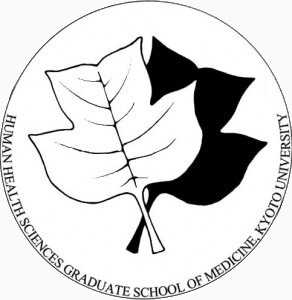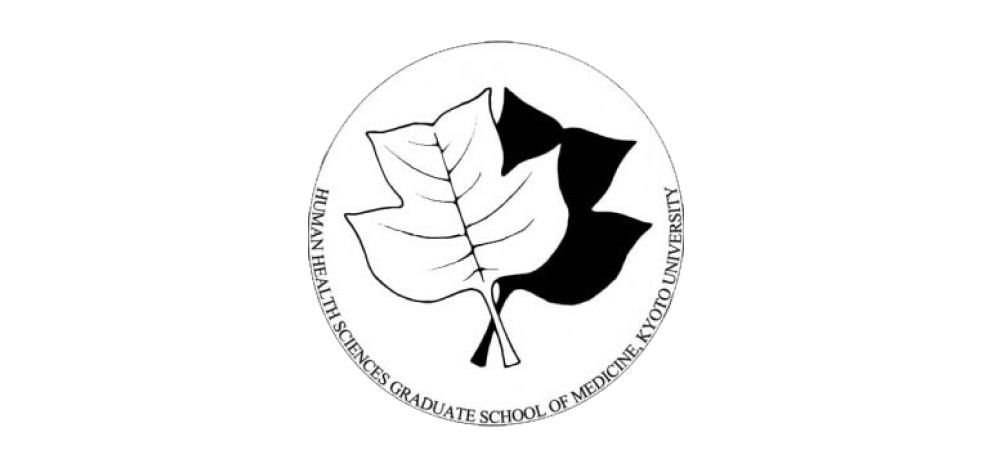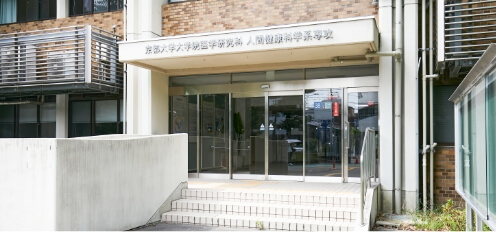Logo of the School of Human Health Sciences

This original logo has been used since the time of the College of Medical Technology, Kyoto University (July 1981).
The tulip tree figure symbolizes beauty (love and service), its thick trunk symbolizes powerfulness (healthy mind and body), and its short-coat-like leaves symbolize activeness.
The two tulip leaves shown as yin and yang also implies the importance of harmony and cooperation.
(This logo was designed by the late Prof. Yoshizo Sakaguchi.)
Educational goal
- We strive to foster medical specialists with advanced knowledge and skills who can take an innovative role in education, research, and other activities in health science.
- We strive to foster specialists with an original mind, inventiveness, and ability to act effectively.
- We strive to foster specialist, who can study diseases scientifically, and detect their causes academically.
- We strive to foster specialists with a good education, high standard of ethics, ability to establish a collaborative relationship with other people, and an excellent leadership.
- We strive to foster specialists with an active will to contribute to the society and ability to perform such an act effectively.
- We strive to foster specialists who can cope with the complicated globalization with international perspectives.
Characteristics of the curriculum
| Health science education | Good health refers not merely to a medical condition without diseases, but also to a physically, mentally, socially, and spiritually good condition. At the School of Human Health Sciences, we take up “conducting science on health” as our core educational theme and form the basis of “health science” from the freshman years through “Introduction to School of Human Health Sciences”. We foster specialists who can practice “health science” in the fields of health service, health care, and welfare by providing studies on health promotion over 4 years. |
|---|---|
| Multidisciplinary team care education | The application of multidisciplinary team care should not be limited to highly advanced medical care, such as transplantation and regenerative medicine, or rehabilitation, but also to much wider fields, and there is a high demand for medical specialists, who can actively participate in multidisciplinary team care with an effective leadership. At the School of Human Health Sciences, we teach shared principles and methodologies required for patient-centered care in order to foster medical specialists, who can provide highly advanced medical care based on such knowledge and work effectively in the globalized environment. |
| Cross-departmental education | At the School of Human Health Sciences, we actively provide “cross-departmental education” whereby students of multiple departments take the same subjects. Through discussions from different viewpoints on health- and healthcare-related issues and the expected roles of the medical staff, we aim to foster medical specialists, who can understand the viewpoints of other professions. |
History
| September 1899 | Established the Nurse Training Department of Kyoto Imperial University Hospital |
|---|---|
| February 1902 | Established the Midwife Training Department of Kyoto Imperial University Hospital |
| April 1922 | Established the Nursing and Midwifery Training School of Kyoto Imperial University Hospital |
| March 1950 | Renamed the school to the Nursing School, Faculty of Medicine, Kyoto University |
| September 1952 | Established the Midwifery Department, Nursing School, Faculty of Medicine, Kyoto University |
| April 1954 | Renamed the school to the Midwifery School, Faculty of Medicine, Kyoto University |
| April 1959 | Established the School of Medical Technologist, Faculty of Medicine, Kyoto University |
| April 1972 | Established the School of Clinical Technologist, Faculty of Medicine, Kyoto University |
| April 1975 | Established the Departments of Nursing and Midwifery, College of Medical Technology, Kyoto University |
| April 1976 | Established the Department of Sanitary Engineering, College of Medical Technology, Kyoto University |
| April 1982 | Established the Departments of Physical Therapy and Occupational Therapy, College of Medical Technology, Kyoto University |
| October 2003 | Established the School of Health Science, Faculty of Medicine, Kyoto University, with 4 departments |
| April 2004 | Entrance of the students of the 1st-class at the School of Health Science, Faculty of Medicine, Kyoto University |
| March 2007 | Closed the College of Medical Technology, Kyoto University |
| April 2007 | Established the School of Human Health Sciences, Graduate School of Medicine, Kyoto University (master’s course) |
| April 2008 | Renamed the school to the School of Human Health Sciences, Faculty of Medicine, Kyoto University |



